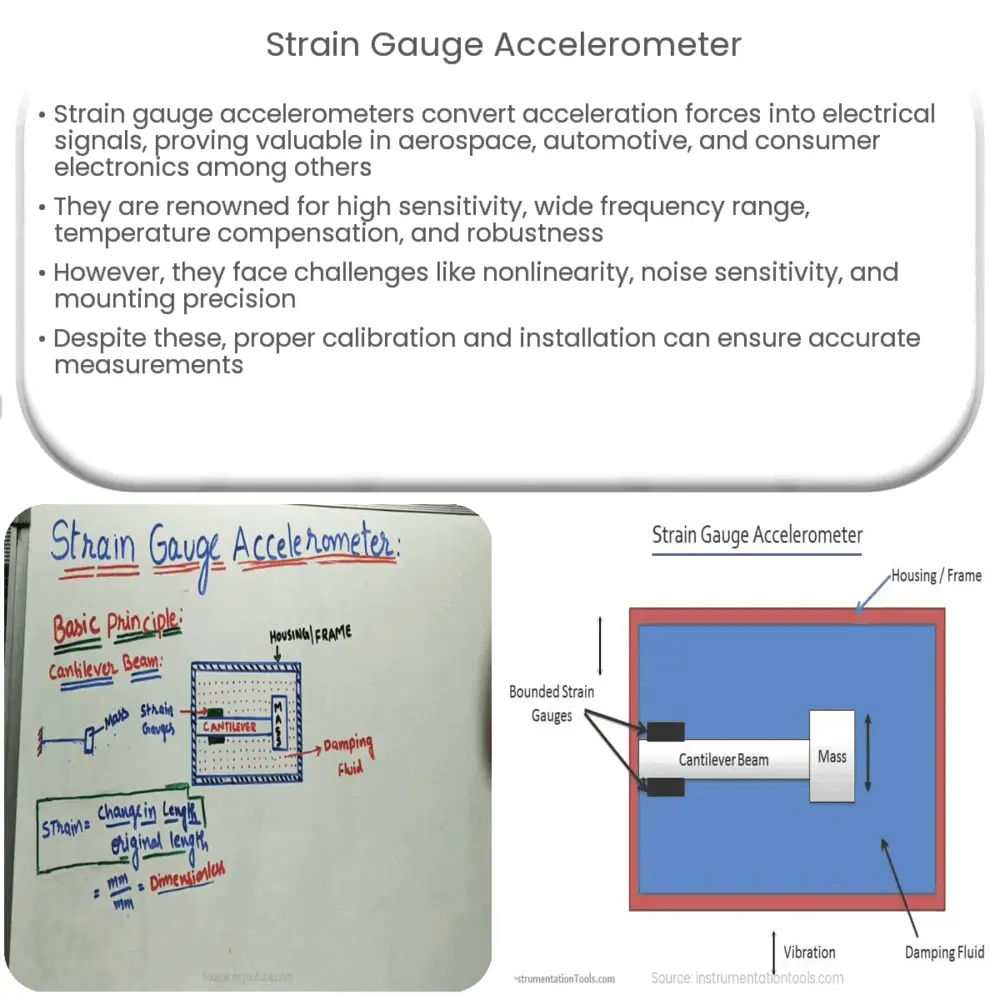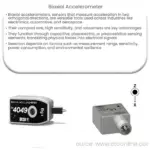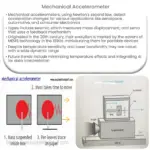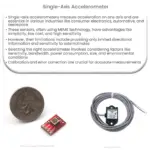Strain gauge accelerometers measure acceleration by converting mechanical strain into electrical signals, offering high sensitivity and a wide frequency range.

Strain Gauge Accelerometer: Principles, Applications, and Advantages
Introduction
A strain gauge accelerometer is a type of sensor that measures acceleration forces by converting mechanical strain into an electrical signal. These devices have become increasingly important in various industries, as they are capable of detecting even the slightest changes in motion, making them useful for applications such as structural health monitoring, automotive testing, and aerospace engineering. In this article, we will discuss the principles of strain gauge accelerometers, their applications, and advantages.
Working Principle of Strain Gauge Accelerometers
At the heart of a strain gauge accelerometer is a strain gauge, which is a thin, flexible electrical conductor that changes its electrical resistance when deformed. This property makes it suitable for sensing mechanical strain caused by an applied force, such as acceleration. The basic working principle of a strain gauge accelerometer involves the conversion of acceleration forces into mechanical strain, which is then transformed into an electrical signal through the strain gauge.
Typically, a strain gauge is bonded to a solid, elastic mass, often referred to as the seismic mass or proof mass. When the accelerometer experiences acceleration, the mass will deflect due to the inertial force acting upon it. This deflection causes mechanical strain on the strain gauge, altering its electrical resistance. By measuring this change in resistance, it is possible to determine the acceleration experienced by the accelerometer.
Strain gauge accelerometers often use a Wheatstone bridge configuration, which consists of four resistive elements arranged in a diamond shape. The strain gauge is placed as one of these elements, and the other three resistors are chosen to have a similar temperature coefficient. This arrangement allows the Wheatstone bridge to compensate for temperature-induced resistance changes, ensuring accurate acceleration measurements over a wide range of temperatures.
Applications of Strain Gauge Accelerometers
Strain gauge accelerometers find applications in a variety of industries and sectors, some of which include:
- Aerospace Engineering: Strain gauge accelerometers are used for vibration testing and monitoring in aircraft and spacecraft to ensure structural integrity and performance.
- Automotive Industry: These accelerometers are used for vehicle dynamics testing, crash testing, and suspension system evaluation, contributing to enhanced safety and performance.
- Structural Health Monitoring: Strain gauge accelerometers help monitor the health of bridges, buildings, and other civil structures by detecting changes in vibration patterns that may indicate structural issues.
- Industrial Machinery: These sensors are employed to monitor vibrations in rotating equipment, such as motors and turbines, to detect and diagnose potential issues before they escalate into major problems.
- Consumer Electronics: Strain gauge accelerometers are found in smartphones, tablets, and wearable devices, enabling motion tracking and gesture recognition features.
Advantages of Strain Gauge Accelerometers
Strain gauge accelerometers offer several advantages over other types of accelerometers, making them a popular choice for various applications. Some of these advantages include:
- High Sensitivity: Strain gauge accelerometers are known for their high sensitivity, allowing them to detect even minute changes in acceleration. This makes them ideal for applications that require precise measurements.
- Wide Frequency Range: These accelerometers are capable of measuring accelerations over a broad frequency range, making them suitable for various applications across different industries.
- Temperature Compensation: The Wheatstone bridge configuration used in strain gauge accelerometers allows for effective temperature compensation, ensuring accurate measurements across a wide range of operating temperatures.
- Robustness and Reliability: Strain gauge accelerometers are known for their robustness and reliability, as they are less susceptible to mechanical failure compared to other accelerometer types.
- Low Power Consumption: These accelerometers typically require low power to operate, making them suitable for battery-powered or energy-harvesting applications.
Limitations and Challenges
Despite their numerous advantages, strain gauge accelerometers also have some limitations and challenges that need to be considered:
- Nonlinearity: The relationship between strain and resistance in strain gauges is not always perfectly linear, which can introduce errors in acceleration measurements. However, modern calibration techniques and signal conditioning can help mitigate these effects.
- Noise: Strain gauge accelerometers are sensitive to electrical noise, which can affect the accuracy of the measured signal. Proper shielding and filtering techniques are essential to minimize noise interference.
- Mounting and Installation: Proper mounting and installation of strain gauge accelerometers are crucial to obtain accurate measurements. Inaccurate mounting can introduce errors in the measurements or even damage the sensor.
Conclusion
Strain gauge accelerometers are versatile and reliable sensors that have found widespread use in various industries and applications, from aerospace engineering to consumer electronics. Their high sensitivity, wide frequency range, and temperature compensation make them a popular choice for measuring acceleration forces. While there are certain limitations and challenges associated with strain gauge accelerometers, modern calibration techniques and careful installation practices can help overcome these issues, ensuring accurate and reliable measurements in a variety of environments.




